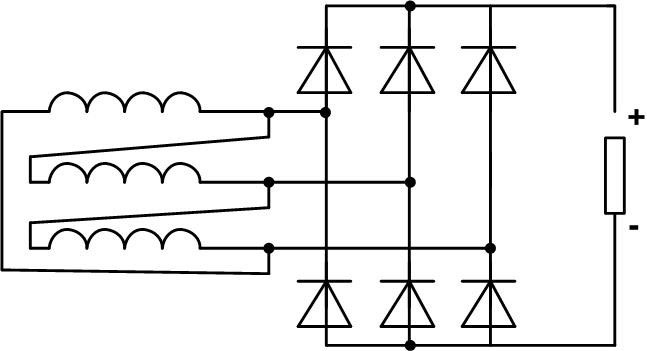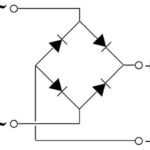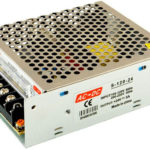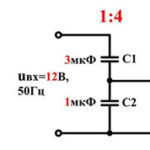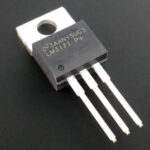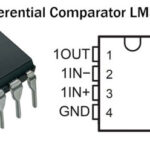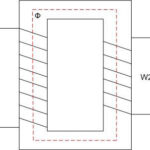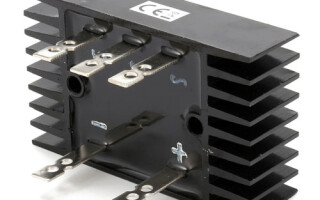Electrical energy is conveniently transported and converted in magnitude in the form of alternating voltage. It is in this form that it is delivered to the final consumer. But to power many devices, you still need a constant voltage.
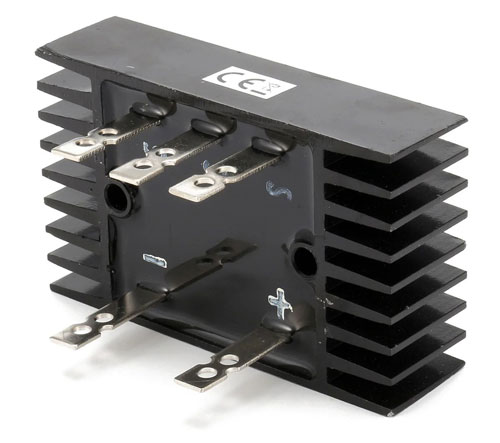
Content
Why do we need a rectifier in electrical engineering
The task of converting AC voltage to DC is assigned to rectifiers. This device is widely used, and the main areas of use of rectifying devices in radio and electrical engineering are:
- formation of direct current for power electrical installations (traction substations, electrolysis plants, excitation systems of synchronous generators) and powerful DC motors;
- power supplies for electronic devices;
- detection of modulated radio signals;
- formation of a constant voltage proportional to the level of the input signal for building automatic gain control systems.
The full scope of rectifiers is extensive, and it is impossible to list it within the framework of one review.
Principles of operation of rectifiers
The operation of rectifying devices is based on the property of one-sided conductivity of elements. You can do this in different ways. Many ways for industrial applications have become a thing of the past - for example, the use of mechanical synchronous machines or electrovacuum devices. Now valves are used that conduct current in one direction. Not so long ago, mercury devices were used for high-power rectifiers. At the moment, they are practically superseded by semiconductor (silicon) elements.
Typical rectifier circuits
The rectifying device can be built according to various principles. Analyzing the circuits of devices, it must be remembered that the constant voltage at the output of any rectifier can only be called conditionally. This node produces a pulsating unidirectional voltage, which in most cases must be smoothed out by filters. Some consumers also require stabilization of the rectified voltage.
Single phase rectifiers
The simplest AC voltage rectifier is a single diode.
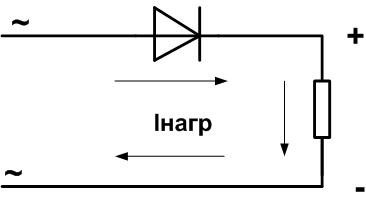
It passes the positive half-waves of the sinusoid to the consumer and “cuts off” the negative ones.
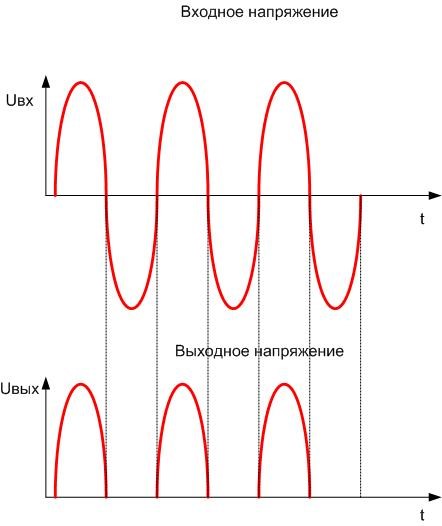
The scope of such a device is small - mainly, switching power supply rectifiersoperating at relatively high frequencies. Although it produces current flowing in one direction, it has significant disadvantages:
- high level of ripple - to smooth and obtain direct current, you will need a large and bulky capacitor;
- incomplete use of the power of the step-down (or step-up) transformer, leading to an increase in the required weight and size indicators;
- the average EMF at the output is less than half of the supplied EMF;
- increased requirements for the diode (on the other hand, only one valve is needed).
Therefore, more widespread full-wave (bridge) circuit.

Here, the current flows through the load twice per period in one direction:
- positive half-wave along the path indicated by red arrows;
- negative half-wave along the path indicated by green arrows.

The negative wave does not disappear, but is also used, so the power of the input transformer is used more fully. The average EMF is twice that of the one-half-wave version. The shape of the ripple current is much closer to a straight line, but a smoothing capacitor is still required. Its capacity and dimensions will be smaller than in the previous case, because the ripple frequency is twice the frequency of the mains voltage.
If there is a transformer with two identical windings that can be connected in series or with a winding that has a tap from the middle, a full-wave rectifier can be built according to a different scheme.
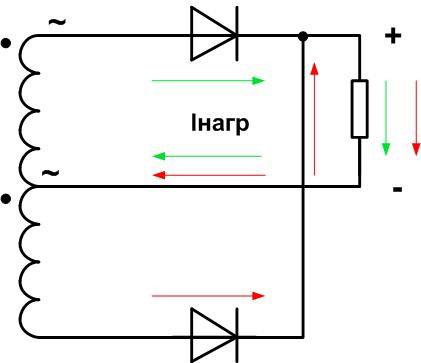
This option is actually a double circuit of a half-wave rectifier, but has all the advantages of a full-wave rectifier. The disadvantage is the need to use a transformer of a specific design.
If the transformer is made in amateur conditions, there are no obstacles to winding the secondary winding as required, but slightly larger iron will have to be used. But instead of 4 diodes, only 2 are used. This will make it possible to compensate for the loss in weight and size indicators, and even win.
If the rectifier is designed for high current and the valves must be installed on radiators, then installing half the number of diodes gives significant savings. It should also be taken into account that such a rectifier has twice the internal resistance compared to that assembled in a bridge circuit, so the heating of the transformer windings and the associated losses will also be higher.
Three-phase rectifiers
From the previous circuit, it is logical to move on to a three-phase voltage rectifier, assembled according to a similar principle.
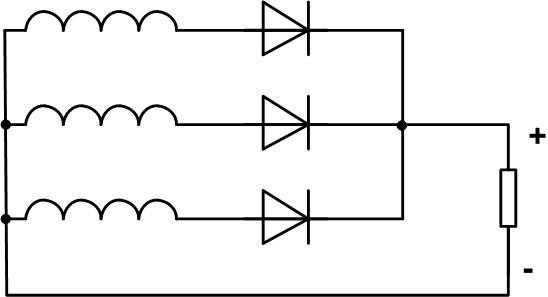
The output voltage shape is much closer to a straight line, the ripple level is only 14%, and the frequency is equal to three times the frequency of the mains voltage.

And yet the source of this circuit is a half-wave rectifier, so many of the shortcomings cannot be overcome even with a three-phase voltage source. The main one is the incomplete use of the transformer power, and the average EMF is 1.17⋅E2eff (effective value of the EMF of the secondary winding of the transformer).
The best parameters have a three-phase bridge circuit.

Here, the amplitude of the output voltage ripple is the same 14%, but the frequency is equal to the geared frequency of the input AC voltage, so the capacitance of the filter capacitor will be the smallest of all the options presented. And the output EMF will be twice as high as in the previous circuit.

This rectifier is used with an output transformer having a star secondary winding, but the same valve assembly will be much less efficient when used in conjunction with a transformer whose output is connected in delta.
Here the amplitude and frequency of pulsations are the same as in the previous circuit. But the average EMF is less than in the previous scheme in times. Therefore, this inclusion is rarely used.
Voltage multiplier rectifiers
It is possible to build a rectifier whose output voltage will be a multiple of the input voltage. For example, there are circuits with voltage doubling:
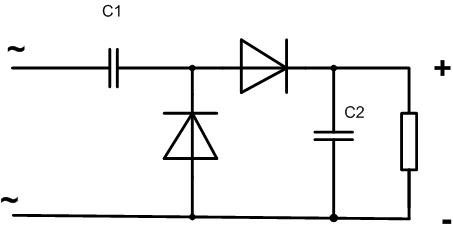
Here, capacitor C1 charges during the negative half-cycle and is switched in series with the positive wave of the input sine wave. The disadvantage of this construction is the low load capacity of the rectifier, as well as the fact that the capacitor C2 is under twice the voltage value. Therefore, such a circuit is used in radio engineering for doubling rectification of low-power signals for amplitude detectors, as a measuring element in automatic gain control circuits, etc.
In electrical engineering and power electronics, another version of the doubling scheme is used.
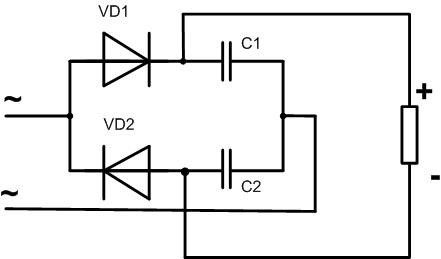
The doubler, assembled according to the Latour scheme, has a large load capacity. Each of the capacitors is under input voltage, therefore, in terms of weight and size, this option also outperforms the previous one. During the positive half-cycle, the capacitor C1 is charged, during the negative - C2. Capacitors are connected in series, and in relation to the load - in parallel, so the voltage across the load is equal to the sum voltage of charged capacitors. The ripple frequency is equal to twice the frequency of the mains voltage, and the value depends from the value of capacities. The larger they are, the less ripple. And here it is necessary to find a reasonable compromise.
The disadvantage of the circuit is the prohibition on grounding one of the load terminals - one of the diodes or capacitors in this case will be shorted.
This circuit can be cascaded any number of times. So, repeating the principle of inclusion twice, you can get a circuit with quadruple voltage, etc.

The first capacitor in the circuit must withstand the voltage of the power supply, the rest - twice the supply voltage. All valves must be rated for double reverse voltage. Of course, for reliable operation of the circuit, all parameters must have a margin of at least 20%.
If there are no suitable diodes, they can be connected in series - in this case, the maximum allowable voltage will increase by a factor of 1. But in parallel with each diode, equalizing resistors must be connected. This must be done, because otherwise, due to the spread of the parameters of the valves, the reverse voltage may be distributed unevenly between the diodes. The result may be the excess of the largest value for one of the diodes. And if each element of the chain is shunted with a resistor (their value must be the same), then the reverse voltage will be distributed exactly the same. The resistance of each resistor should be about 10 times less than the reverse resistance of the diode. In this case, the effect of additional elements on the operation of the circuit will be minimized.
Parallel connection of diodes in this circuit is unlikely to be needed, the currents here are small. But it can be useful in other rectifier circuits where the load consumes serious power. Parallel connection multiplies the allowable current through the valve, but everything spoils the deviation of the parameters. As a result, one diode can take on the most current and not withstand it. To avoid this, a resistor is placed in series with each diode.
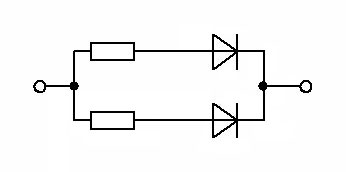
The resistance value is chosen so that at the maximum current the voltage drop across it is 1 volt. So, at a current of 1 A, the resistance should be 1 ohm. Power in this case should be at least 1 watt.
In theory, the voltage multiplicity can be increased indefinitely. In practice, it should be remembered that the load capacity of such rectifiers drops sharply with each additional stage. As a result, you can come to a situation where the voltage drop across the load exceeds the multiplication factor and makes the operation of the rectifier meaningless. This disadvantage is inherent in all such schemes.
Often such voltage multipliers are produced as a single module in good insulation. Similar devices were used, for example, to create high voltage in televisions or oscilloscopes with a cathode ray tube as a monitor. Doubling schemes using chokes are also known, but they have not received distribution - winding parts are difficult to manufacture and not very reliable in operation.
There are a lot of rectifier circuits. Given the wide scope of this node, it is important to approach the choice of the circuit and the calculation of the elements consciously. Only in this case a long and reliable operation is guaranteed.
Similar articles:
